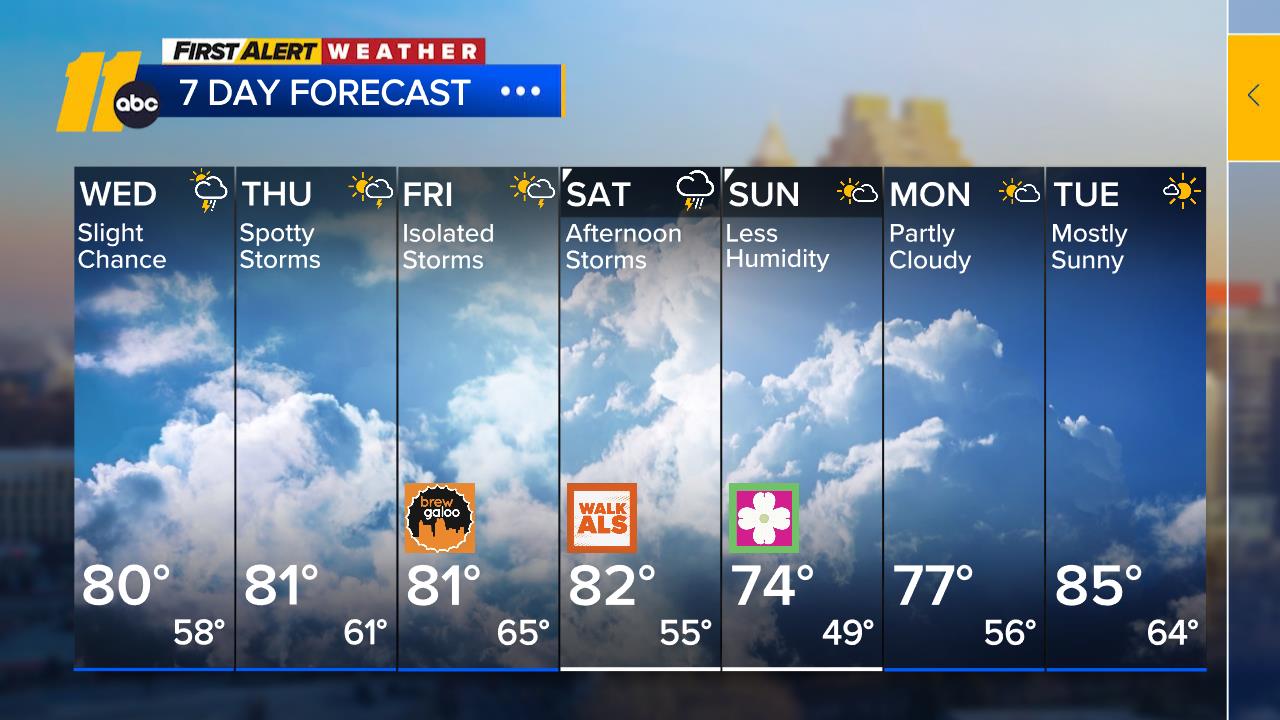
Lifeguards can give you advice on waves if you’re planning to go into the water. If the arrow is parallel to or pointing away from land, the wave height is likely to be lower on the beach than it is offshore. If the arrow points towards land, most of the waves’ power will reach the beach.

It indicates how sheltered the beach will be from these waves. A severe thunderstorm watch is in effect for the area until 11 p.m. The arrow shows the average direction of the waves 1-2 miles out to sea. (WTVD) - Following a hot day, severe storms could pop up throughout the evening in central North Carolina. A long wave period (more than 10 seconds) means the waves at the beach may be more powerful. This is the average number of seconds between one wave and the next, 1-2 miles out to sea. Read more about calculating the expected height of the waves at the beach. Please use one of the following methods to submit your weather report to NWS Raleigh: Via Twitter ( NWSRaleigh) Via Facebook ( fb.com/NWSRaleigh) Via this web form Alternate web form When to send a storm report When you can do safely, please send us a report when you observe one or more of the following: Tornado Hail 0. If you are close to the water, keep an eye on the waves to stop you or your belongings being swept away.

The individual waves out to sea or at the beach can be higher than this number. This is the average height of the waves, 1-2 miles out to sea. 11 Extreme - Avoid being outside during midday hours. 2 weeks ago Evacuating your pets during a hurricane 2 weeks ago Covering travel insurance ahead of hurricane season 3 weeks ago Latest Hurricane News See More Tropical Storm Cindy strengthens as. 8-10 Very high - Spend time in the shade between 11am and 3pm. 6-7 High - Seek shade during midday hours, cover up and wear sunscreen. 3-5 Moderate - Take care during midday hours and do not spend too much time in the sun unprotected. No risk of UV - It’s safe to stay outside. UV exposure index and the protection required to help keep you safe: (WTVD) - Temperatures Sunday were in the 90s in some areas with feels like temperatures possibly reaching triple digits. The higher the percentage of humidity, the wetter it will feel outside. If there is a lot of water vapour, the humidity will be high. Humidity is the amount of water vapor in the air.

Visibility measures the distance at which an object can be clearly seen. Read more about how wind will affect you at the beach. The number is the average wind speed.īeware of offshore winds if you are using inflatables, paddle boards or kayaks. If the arrow points from land to sea, the wind will be blowing out to sea (‘offshore’). The arrow shows the direction of the wind (up is north). The number represents the average wind speed expected at that time. The letters show the direction the wind is blowing from (on a standard 16-point compass). The arrow shows the direction the wind is blowing. Raleigh Extended Forecast with high and low temperatures F Jun 25 Jul 1 0.69 Lo:72 Mon, 26 Hi:91 11 0.26 Lo:69 Tue, 27 Hi:86 8 Lo:67 Wed, 28 Hi:87 7 Lo:65 Thu, 29 Hi:88 3 0.03 Lo:71 Fri, 30 Hi:90 7 0. Strong winds are shown in bold for speeds of 29 mph or more. Wind gust shows the highest wind speed that you should encounter at that time, as winds peak and lull. This gives you a better idea of how the temperature will actually feel at the time. You can see the temperature in Celsius or Fahrenheit by using the dropdown menu.įeels like temperature considers other factors, such as wind speed and humidity. This number shows the air temperature for the time period.

September and October will be warmer, on average, and drier than normal.Chance of precipitation represents how likely it is that rain (or other types of precipitation, such as sleet, snow, hail and drizzle) will fall from the sky at a certain time. Summer temperatures will be slightly above normal, with the hottest periods in mid- to late June and early July. April and May temperatures will be near normal, on average, with above-normal precipitation. Snowfall will be above normal in the east and below normal in the west, with the best chances for snow in early and late January and mid-February. Winter temperatures will be below normal, with the coldest periods in early December, early and late January, and mid-February. Enter Your Location Annual Weather Summary


 0 kommentar(er)
0 kommentar(er)
